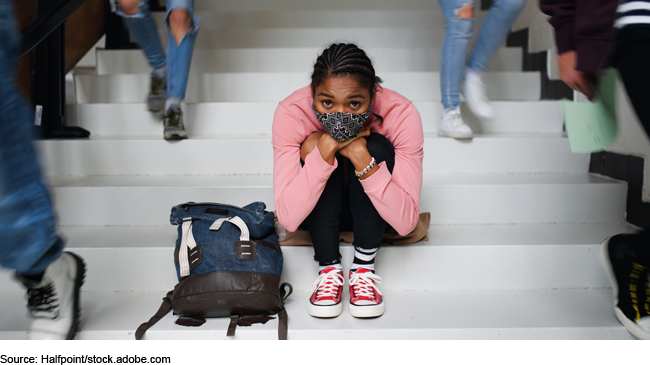Behavioral Health and COVID-19: Higher-Risk Populations and Related Federal Relief Funding
Fast Facts
The COVID-19 pandemic increased social isolation and stress—affecting the behavioral health of many Americans. Data suggests higher rates of anxiety and depression symptoms, and more substance use among many adults, as a result.
However, certain populations may be at higher risk of pandemic-related behavioral health effects, including children and adolescents, healthcare workers, and people from some racial or ethnic groups, like Latinos.
As of Sept. 2021, the federal government awarded over $8 billion in COVID-19 relief funding for behavioral health, mainly through grant programs that can generally serve those higher-risk populations.

Highlights
What GAO Found
The effects of the COVID-19 pandemic and related economic crisis—such as increased social isolation, stress, and unemployment—have intensified concerns about the number of people in the U.S. affected by behavioral health conditions: mental health and substance use disorders. Based on 32 interviews with federal, state, and other stakeholders, and a review of selected research, GAO found that certain populations may be at higher risk of new or exacerbated behavioral health symptoms or conditions related to the pandemic. Six populations were cited by the most stakeholders as being at higher risk of such behavioral health effects for a range of reasons. Children and adolescents, for example, had rising rates of behavioral health conditions before the pandemic and then faced disruptions to school-based behavioral health services, stakeholders said. They also said that people may be part of multiple higher-risk populations, though not everyone at risk will develop symptoms or conditions. Stakeholders cautioned that with the COVID-19 pandemic ongoing, it will take time to determine how different populations may be affected in the long term.
Populations Cited by the Most Stakeholders as Being at Higher Risk of Behavioral Health Effects

As of November 2021, the federal government awarded over $8 billion in COVID-19 relief funding for behavioral health. Over 97 percent of this funding was provided to states and other recipients through six programs: one Federal Emergency Management Agency program, and five Substance Abuse and Mental Health Services Administration (SAMHSA) programs. For example, SAMHSA awarded about $5.3 billion to 50 states, Washington, D.C., eight U.S. territories and other jurisdictions, and one tribe through supplements to existing substance abuse and mental health block grants using standard statutory formulas. The Federal Emergency Management Agency also awarded about $467 million to 46 states, Washington, D.C., and four U.S. territories via the Crisis Counseling Assistance and Training Program.
GAO's review of program documentation shows that the COVID-19 relief funds for behavioral health, as awarded through the six programs, could generally serve the six higher-risk populations identified by stakeholders. Selected funding recipients in four states and Washington, D.C., reported varying ways they were using, or planned to use, relief funds to reach higher-risk populations. For example, officials in one state said they planned to use some mental health block grant funds to assist children and adolescents in the child protective services system. SAMHSA officials said that it would take time to determine who was actually served by COVID-19 relief funded programs, but said that it was important to examine grantee data to determine whether target populations were reached and identify any gaps, and the agency planned to do so.
Why GAO Did This Study
The COVID-19 pandemic has had repercussions for the behavioral health of the nation. During the pandemic, U.S. adults have reported higher rates of anxiety and depression symptoms and substance use. To address related concerns, the CARES Act; the Consolidated Appropriations Act, 2021; and the American Rescue Plan Act of 2021 appropriated relief funds specifically for behavioral health.
The CARES Act includes a provision for GAO to report on its ongoing monitoring and oversight efforts related to the COVID-19 pandemic. This report describes (1) populations that may be at higher risk of behavioral health effects; (2) the amount and type of funding the federal government provided in COVID-19 relief to address behavioral health needs; and (3) whether COVID-19 relief funds for behavioral health could serve higher-risk populations, and how selected funding recipients plan to use these funds. GAO will continue to monitor behavioral health issues as part of ongoing COVID-19 related oversight.
To conduct this work, GAO reviewed selected research on COVID-19 and behavioral health, and relevant federal funding opportunity and awards documents. GAO also interviewed stakeholders, such as federal officials, researchers, and grantees. Grantees included state officials and providers in four states and Washington, D.C., selected based on state behavioral health metrics and CARES Act-funded grants received, among other factors.
GAO incorporated technical comments from the departments of Health and Human Services and Homeland Security, as appropriate.
For more information, contact Alyssa M. Hundrup at (202) 512-7114 or hundrupa@gao.gov.
